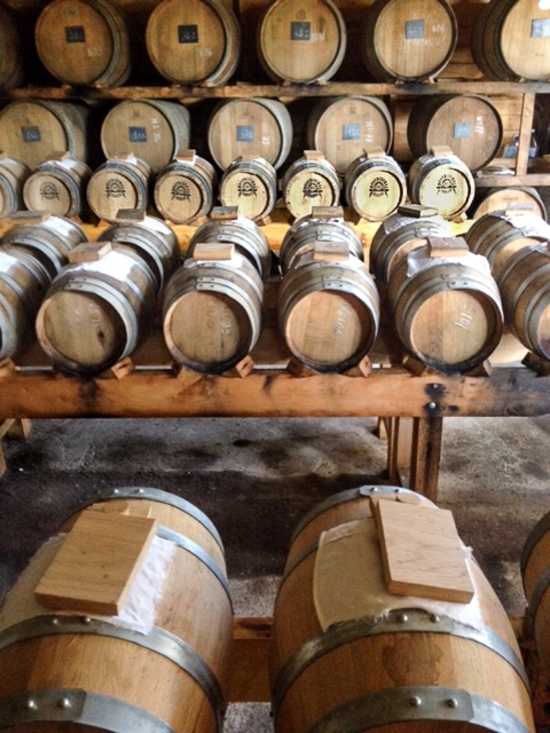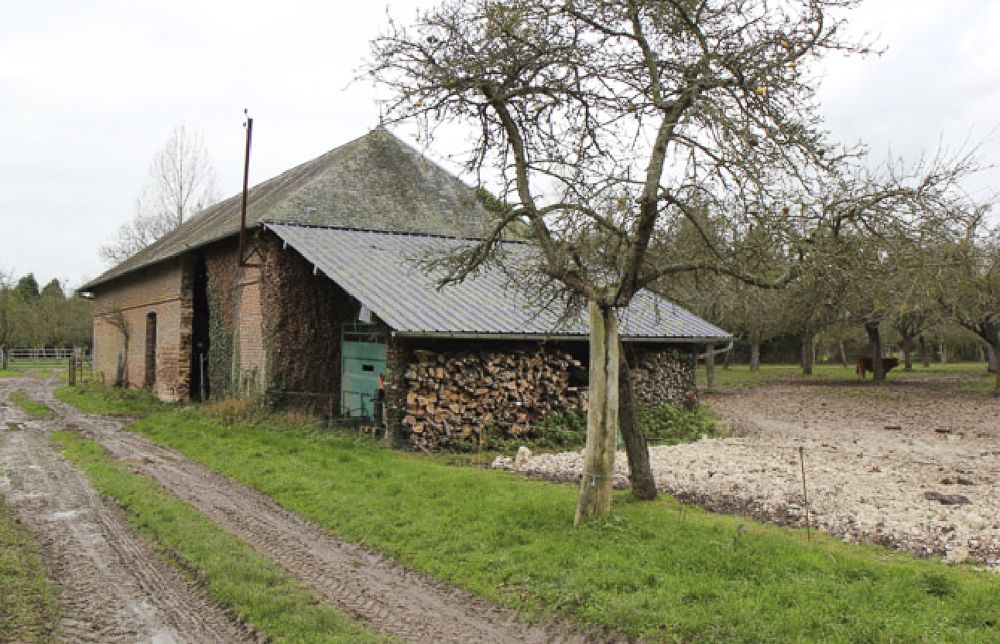Vinegar of the Gods Returns!

My bosses thought I was absolutely nuts when I brought in $10,000 worth of Norman vinegar earlier this year.
"Wait, it's vinegar? And it's how much?"
But, as all of you Camut fans know, nothing made by the two brothers of Semainville is run of the mill (which is why we sold every last bottle in a matter of weeks). We’ve been preaching the gospel for as long as I can remember here at K&L. As I often tell customers, there are few genres of wine and spirits from which I can unequivocally declare a “world’s best,” but in the case of Calvados there’s Camut and then there’s everything else. From the age and condition of the family orchards, to the meticulous sorting process, to the blending and maturation, there’s simply no other distiller in Normandy—or the world, for that matter—who is making fruit spirits with the same complexity, pureness of flavor, and utter awesomeness. I’ve been visiting the Camut brothers—Emmanuel and Jean-Gabriel—at their grandfather’s original estate for seven years now, getting to know the two giants (literally and figuratively—they’re both quite tall!) of apple brandy quite intimately. It wasn’t until my last visit, however (possibly because it was the first time I had spoken to the brothers directly with a more intermediate grasp of the French language), that Emmanuel felt comfortable sharing with me a lingering secret. “I need to show you something, David,” he said to me cryptically after dinner, his voice quivering under the weight of strong drink. “It’s in the shed behind the barn.” I was both intrigued and utterly nervous. Did he have a body hidden back there? Did Emmanuel kill someone? What was in that shed?!!

There was nothing but darkness and cold winter air as we walked into the icy Norman night, through the Camut orchards, and towards the old shed Emmanuel had mentioned. As we approached the looming structure, he took out a flashlight, fumbling the key of the padlock guarding the way, and opened the door into the small room, revealing in that instant under the concentrated glare of the lamp what it was that awaited us: hundreds of small barrels, of various shape and sizes, stacked in rows according to type. "This is my new obsession," Emmanuel said with a grin. What was in these barrels? Not Calvados and not cider, but rather balsamic. At the beginning of the new millennium, it seems Emmanuel was offered a bottle of traditional balsamic vinegar by some Italian friends of his. He was taken by the word “traditional” on the bottle because, as he would come to find out, it belonged to a protected appellation of vinegars that followed rigorous guidelines as to production. The vinegar was only sold in 100ml bottles and it was both elaborate and expensive, representing only about .01% of all Italian balsamics. The experience was transformative, apparently; he had never known balsamic vinegar of this quality. Being the artisan producer that he is, Emmanuel decided to research the process of making “traditional” balsamic vinegar and applied it to the base material he knew best: apples.

The particularity of the “traditional” process is the attention given to cooking the must and concentrating the flavor. To recreate that quality, Emmanuel uses two 200 liter copper pots heated gently by a wood fire. Whereas the Italians use a variety of grape that results in roughly 17% sugars, Emmanuel’s apple must—composed of interesting Norman varietals—only results in 5%, and thus three times the concentration. Next comes a long decanting period, done during winter, where about 15-20% of the production is tossed out to keep the must as clear and clean as possible. During the spring, the must is transferred into barrels during which a slow acetic fermentation process begins, converting the sugars into a very light alcohol. From that point, the vinegar is aged for more than a decade, during which it loses roughly 10% of its volume each year from evaporation. With each year that passes, Emmanuel moves the liquid into smaller and smaller barrels, made of different woods like chestnut and acacia, some so small that you could hold them comfortably with one hand. That's as much as Emmanuel was willing to share with me about the process, and at that time he didn't want me taking any photos of the shed. "This is a secret, David," he mentioned again. "I"m not ready for the world to know about this yet."

A year and a half later, however, Emmanuel Camut—the world's foremost authority of all-things apple—was finally ready to share a bit of his Norman magic with us. He reached out to me this past spring and asked if K&L might like to be the exclusive American outpost for his Vinaigre Balsamique de Cidre, an elixir that in its appearance is as black and dense as that cold winter's night we spent back in the shed. Oozing like maple syrup out of the bottle, the resulting flavor is unlike any balsamic you've ever tasted. Astonishingly rich in flavor, with a harmonious balance of both sweet and sour, you only need one drop on a piece of bread, a tomato, or even a slice of finely-cooked steak to enhance the flavor of each bite immensely. All of the apples used for the vinegar came from an Norman orchard where no chemicals or herbicides have ever been used and where—per the norm for Calvados orchards—cows graze openly in a symbiotic relationship with the apple trees. Emmanuel’s vinegar is so concentrated, flavorful, and rich in character that just a single drop carries with it a symphony of flavor. While the bottles are only 100ml in volume, each has more than 2000 drops. Our initial order was a mere 120 bottles, most of which was purchased and consumed by the K&L staff, and now our second order has arrived. It is without a doubt the best vinegar of any kind I've ever tasted, but I'm far from an expert. What I do know, however, is that most of my colleagues feel the exact same way. Basically, if you thought the Camut Calvados was life-changing, wait until you try the balsamic.
-David Driscoll
